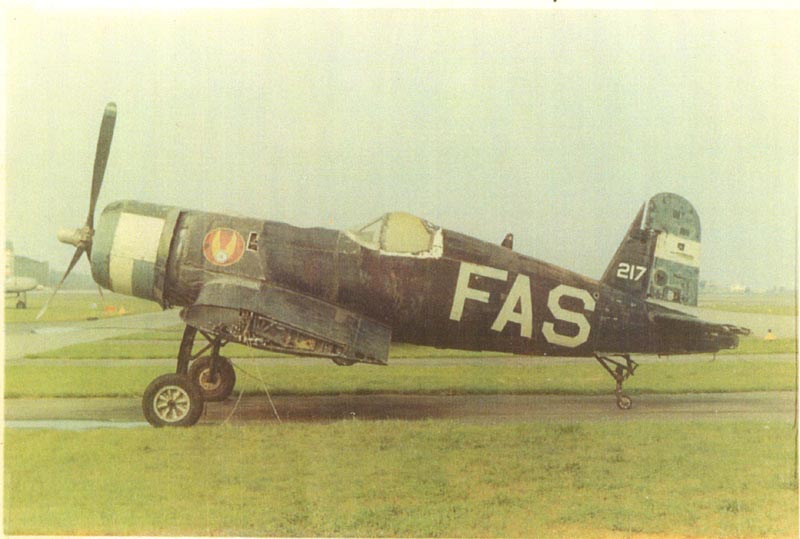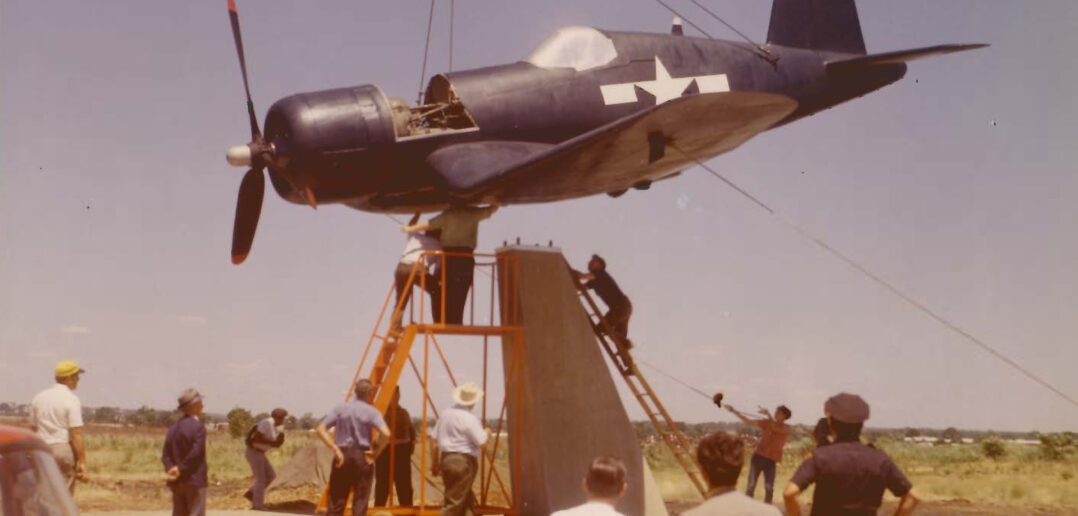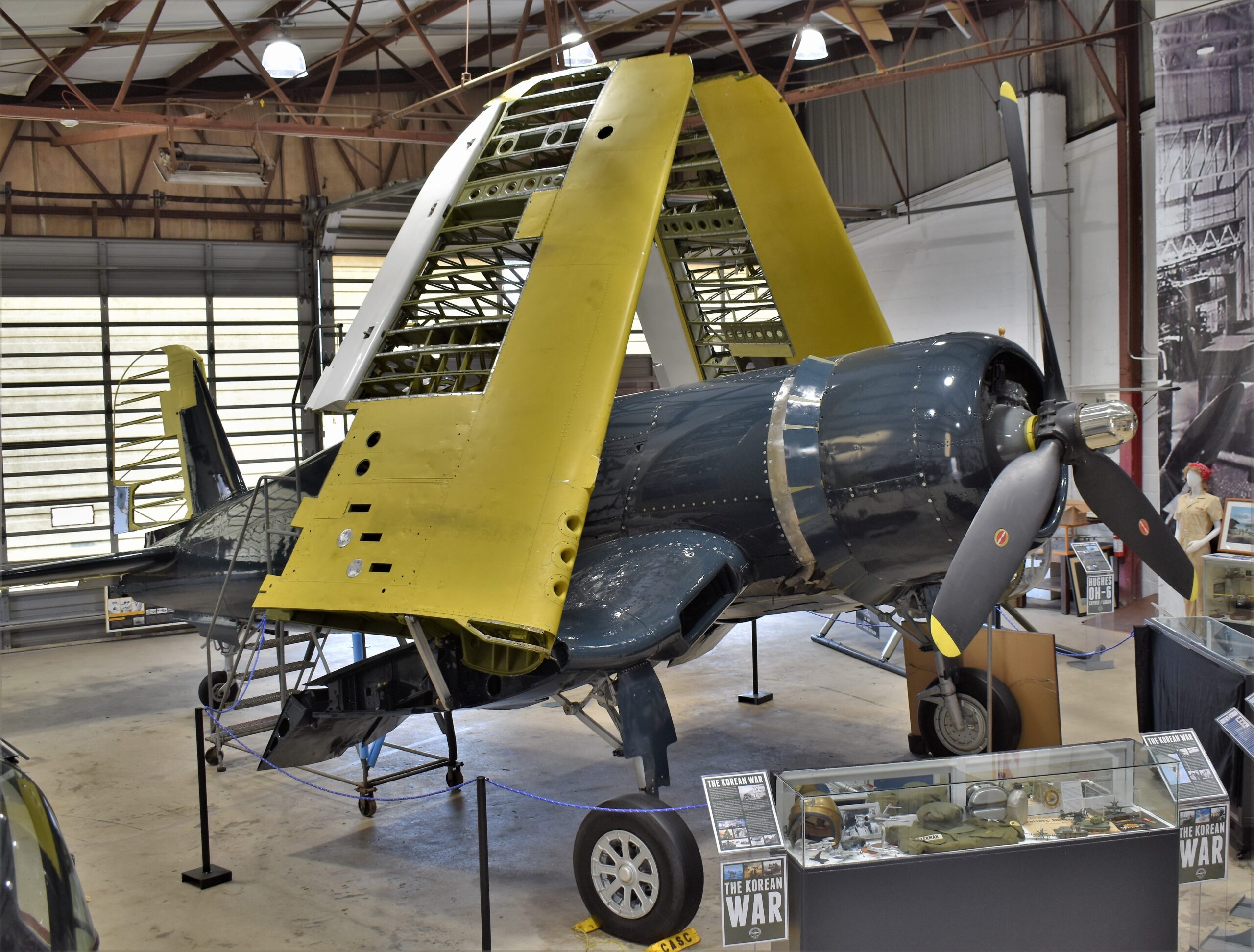By Christopher Soltis
Along the coast of Connecticut sits a historic airfield that has seen its share of important aviation achievements throughout its more than 100 years of operation. This wind-swept field, known today as the Sikorsky Memorial Airport in Stratford, is home to a growing air museum called the Connecticut Air & Space Center. With more than 20 vintage aircraft, the museum showcases the state’s unique aviation triumphs. The jewel of the collection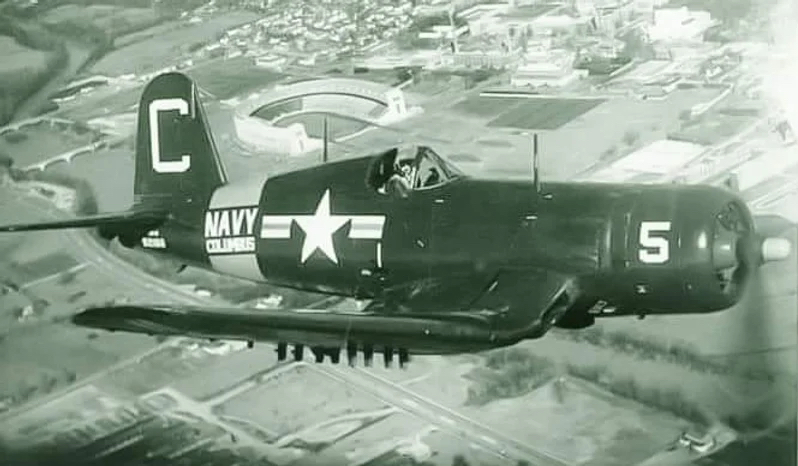 is undoubtedly the World War II–era Corsair fighter plane. But this airplane is more than just a relic of aluminum and steel. Since most of the aircraft was designed and built in Connecticut, it has become a proud symbol of the state’s industrial capability and ingenuity. Indeed, the Connecticut General Assembly passed legislation in 2005 acknowledging the Corsair as the “Official Aircraft of the State of Connecticut.”
is undoubtedly the World War II–era Corsair fighter plane. But this airplane is more than just a relic of aluminum and steel. Since most of the aircraft was designed and built in Connecticut, it has become a proud symbol of the state’s industrial capability and ingenuity. Indeed, the Connecticut General Assembly passed legislation in 2005 acknowledging the Corsair as the “Official Aircraft of the State of Connecticut.”
Chance Vought, a subsidiary of Stratford’s United Aircraft Corporation, designed and built the Corsair. First flown on May 29, 1940, the XF4U-1 prototype exceeded almost all expectations. On October 1, 1940, on a test run from Stratford to Hartford, the XF4U-1 became the first single-engine US fighter to fly faster than 400 miles per hour in sustained-level flight. More than 12,500 Corsairs were built, with over 7,000 manufactured in Stratford alone. Due to their adaptability and quality construction, Corsairs remained in production continuously from 1942 to 1953, the longest of any piston-engined US fighter in history. Connecticut’s Corsair remains one of the most successful fighter aircraft ever built.
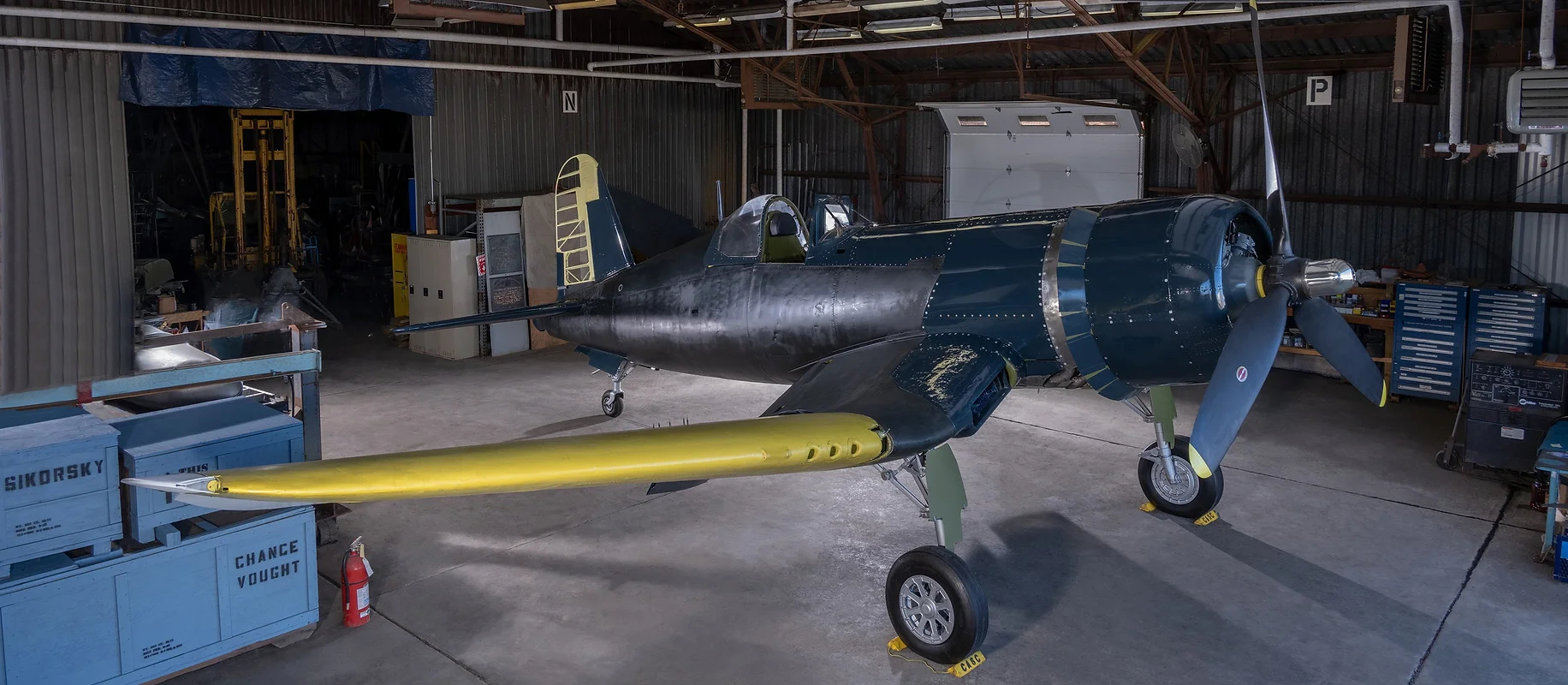 The Sikorsky Memorial Corsair is an FG-1D Bureau Number 92460, built under license by Goodyear Aircraft Corporation in Akron, Ohio. She was accepted by the US Navy on July 22, 1945, too late to see combat in World War II. During the postwar years, she saw service with squadron VMF-314, operating at various Naval Air Reserve Stations (NAS), including Akron and Columbus, Ohio; Atlanta, Georgia; Cherry Point, North Carolina; and Jacksonville and Miami, Florida. By 1955, 92460 was flown to NAS Litchfield, Arizona, and mothballed with the rest of the Corsair fleet. In 1957, she was stricken from the Navy’s inventory and given to the Salvadoran Air Force along with 20 other Corsairs; there, she acquired the call sign FAS-217. At some point in the 1960s, a cable attached to the plane’s rudder came loose and sawed itself into the bulkhead behind the cockpit. The aircraft was deemed unairworthy and towed to the “boneyard,” where retired planes are stored or stripped for parts. By 1969, only six Corsairs remained in service; the survivors of the notorious 100-Hour War (also known as the “Soccer War”) between El Salvador and Honduras were finally retired in 1971.
The Sikorsky Memorial Corsair is an FG-1D Bureau Number 92460, built under license by Goodyear Aircraft Corporation in Akron, Ohio. She was accepted by the US Navy on July 22, 1945, too late to see combat in World War II. During the postwar years, she saw service with squadron VMF-314, operating at various Naval Air Reserve Stations (NAS), including Akron and Columbus, Ohio; Atlanta, Georgia; Cherry Point, North Carolina; and Jacksonville and Miami, Florida. By 1955, 92460 was flown to NAS Litchfield, Arizona, and mothballed with the rest of the Corsair fleet. In 1957, she was stricken from the Navy’s inventory and given to the Salvadoran Air Force along with 20 other Corsairs; there, she acquired the call sign FAS-217. At some point in the 1960s, a cable attached to the plane’s rudder came loose and sawed itself into the bulkhead behind the cockpit. The aircraft was deemed unairworthy and towed to the “boneyard,” where retired planes are stored or stripped for parts. By 1969, only six Corsairs remained in service; the survivors of the notorious 100-Hour War (also known as the “Soccer War”) between El Salvador and Honduras were finally retired in 1971.
Hearing tales of a boneyard of Corsairs in South America, Nick Mainero, a World War II Marine Corsair pilot and then manager of Sikorsky Airport, wanted to bring a Corsair back to Stratford to honor the factory workers and pilots who built and flew the famous plane. In 1969, Mainero traveled to El Salvador and acquired one of the derelict fighters. He then shipped the aircraft to Floyd Bennet Field, New York, where it was “slung” underneath a Sikorsky S-64 Skycrane and airlifted to Stratford. The plane was cosmetically restored and, in 1971, installed atop a concrete platform. For almost four decades, the Corsair would remain perched on its pedestal with only occasional washes and repaints.
After 37 years, time and neglect had taken their toll, and the venerable World War II fighter started showing her age. In 2008, the Connecticut Air & Space Center successfully removed the Corsair from its pedestal and began its restoration for static display. Ezell Aviation of Breckenridge, Texas, a renowned warbird restoration shop, was contracted to repair the spar in the center section, including the cockpit, and source all three landing gear assemblies. On September 8, 2013, the Corsair rolled out on her own landing gear for the first time in over 42 years. On May 30, 2021, she took center stage when the Connecticut Air & Space Center opened its first publicly accessible “mini-museum” in a portion of the historic 1929 Curtiss Aircraft Hangar at the Sikorsky Memorial Airport. While the fuselage has been mostly restored, the outer wings require additional work before they are covered in fabric and painted. Volunteers will continue working on sourcing and installing smaller components inside the aircraft for years to come as they strive to make the FG-1D look precisely as she did the day she came off the production line in 1945.
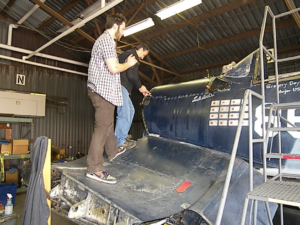
Christopher Soltis is the curator of the Connecticut Air & Space Center.
Explore!
The Connecticut Air & Space Center, 225 B Main Street, Stratford, ctairandspace.org
 Connecticut Explored received support for this publication from the State Historic Preservation Office of the Department of Economic and Community Development with funds from the Community Investment Act of the State of Connecticut.
Connecticut Explored received support for this publication from the State Historic Preservation Office of the Department of Economic and Community Development with funds from the Community Investment Act of the State of Connecticut.
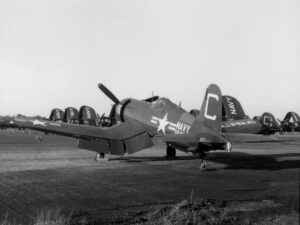 Earliest known photograph of FG-1D Corsair BuNo: #92460 while serving at: Naval Air Reserve Station Columbus, Ohio. Circa:1953 (Note: this photo was discovered as an auction on eBay and was promptly purchased by the museum.
Earliest known photograph of FG-1D Corsair BuNo: #92460 while serving at: Naval Air Reserve Station Columbus, Ohio. Circa:1953 (Note: this photo was discovered as an auction on eBay and was promptly purchased by the museum.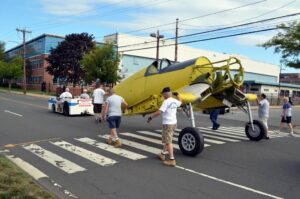 In 2013 Corsair #92460 reached a milestone when she was towed on her landing gear for the first time in 42 years past the original Chance Vought Plant where the Corsair was initially designed and produced during World War II.
In 2013 Corsair #92460 reached a milestone when she was towed on her landing gear for the first time in 42 years past the original Chance Vought Plant where the Corsair was initially designed and produced during World War II.
